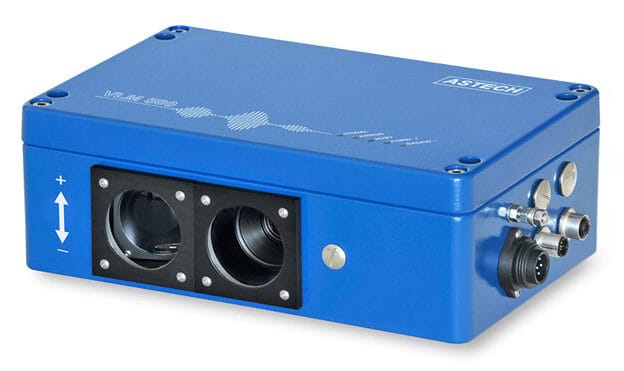Length and Speed Measurement Sensor
Length and speed measurement sensors play a crucial role in various industries, providing accurate data for monitoring and optimizing processes.
- Home
- Products
- Length and Speed Measurement Sensor
Let us help you
Length and Speed Measurement Sensors
Length and speed measurement sensors play a crucial role in various industries, providing accurate data for monitoring and optimizing processes.

From manufacturing to transportation, these sensors help ensure efficiency and quality in operations. In this detailed outline, we will explore the importance, types, and applications of length and speed measurement sensors, shedding light on their significance in modern technology.
These sensors utilize advanced technologies, such as laser and ultrasonic waves, to deliver precise measurements in real time. By integrating a length measurement sensor into production lines, companies can significantly reduce waste and enhance product consistency. Additionally, length and speed measurement sensors facilitate effective logistics management by tracking vehicle speeds and distances traveled, ultimately driving operational improvements. As industries continue to embrace automation, the demand for these sensors will likely escalate, leading to innovations that further enhance their functionality and reliability. This evolution underscores their integral role in shaping the future of industrial efficiency.
What is a length and speed measurement sensor?
Length and speed measurement sensors are devices designed to accurately measure the distance an object travels over a period of time, providing data on both length and speed parameters. These sensors operate through various technologies, including electromagnetic and optical methods, ensuring versatility across applications. For instance, in manufacturing settings, they can monitor the speed of conveyor belts while simultaneously measuring the length of materials being processed. This dual capability not only streamlines workflows but also contributes to maintaining consistent quality standards. Moreover, industries like automotive and aerospace increasingly rely on these measurement tools to enhance safety protocols by providing real-time data for performance assessments. As technological advancements continue, the future promises even more refined and adaptable length measurement sensors that cater to evolving industrial needs.
Types of length and speed measurement sensors
Contact sensors
Contact sensors physically touch the object being measured to determine its length and speed. These sensors, often employing mechanisms such as wheels or rollers, deliver precise measurements by directly interacting with the object. Their reliability makes them ideal for applications where high accuracy is crucial, such as in packaging lines where dimensions must match specifications exactly. However, the need for physical contact can also introduce wear over time, necessitating maintenance to ensure consistent performance. In contrast, non-contact sensors leverage advanced technologies like laser and ultrasonic waves to measure length and speed without direct interaction. This innovation not only prolongs sensor lifespan but also enhances measurement versatility across diverse environments.
Non-contact sensors
Non-contact sensors use technologies like laser or ultrasonic waves to measure length and speed without touching the object. These sensors excel in environments where physical contact could damage sensitive materials or compromise accuracy. For instance, in high-speed manufacturing processes, a length measurement sensor can instantly capture data while minimizing disruption to the workflow. Their ability to operate over varying distances and through obstacles enhances adaptability across industries, from automotive to robotics. Moreover, advancements in non-contact sensor technology are paving the way for increased integration with digital systems, enabling real-time monitoring and data analytics. This synergy not only streamlines operations but also fosters innovation by providing actionable insights that drive continuous improvement and competitive advantage.
Applications of length and speed measurement sensors
Manufacturing industry
Used in conveyor belts to monitor the speed and length of products moving along the production line. In the manufacturing sector, the integration of a length and speed measurement sensor can significantly enhance operational efficiency. By accurately monitoring the movement of products on conveyor belts, these sensors enable real-time adjustments, reducing bottlenecks and ensuring smooth workflows. Furthermore, they facilitate stringent quality control by flagging discrepancies in product dimensions immediately. This capability not only minimizes waste but also bolsters overall productivity. As businesses increasingly rely on data-driven decision-making, the insights provided by these sensors become indispensable, guiding strategic improvements that can lead to higher profitability and stronger market positioning within competitive landscapes.
Automotive industry
Integrated into vehicles for measuring speed and distance traveled, essential for functions like cruise control. In the automotive industry, the integration of a length and speed measurement sensor is vital for enhancing vehicle performance and safety. These sensors gather real-time data on speed and distance, which is crucial for functions like adaptive cruise control and collision avoidance systems. By enabling precise speed monitoring, they ensure that vehicles maintain optimal performance under varying conditions, thereby improving fuel efficiency and reducing emissions. Additionally, as innovations in sensor technology evolve, we can expect even greater accuracy and reliability, leading to more advanced functionalities that will redefine driving experiences while enhancing passenger safety on roads worldwide.
Sports technology
Utilized in sports equipment to track the speed and distance covered by athletes for performance analysis. In sports technology, a length and speed measurement sensor enhances athlete performance analysis by precisely tracking speed and distance during training. By integrating these sensors into equipment, coaches gain invaluable insights into athletes’ metrics, allowing for tailored training regimens that optimize performance. This data-driven approach enables the identification of strengths and weaknesses, fostering improved techniques over time. As these technologies advance, their application in wearable devices promises to revolutionize how athletes monitor their progress, paving the way for smarter training solutions that can adapt to individual needs and goals while driving competitive success in various sports disciplines.

Can we help you with your project?
- +91-8698009335
- sales@rendertechindia.com
Advantages of using length and speed measurement sensors
Provides real-time data for accurate monitoring
Length and speed measurement sensors provide real-time data that is essential for accurate monitoring across various applications. By continuously capturing metrics, these sensors enable industries to react promptly to changes in operational conditions. For instance, in manufacturing, immediate feedback allows for swift adjustments to production processes, minimizing downtime and enhancing productivity. In logistics, real-time data facilitates effective route optimization, ensuring timely deliveries. Furthermore, the integration of advanced technologies in these sensors enhances reliability and precision, which ultimately leads to improved quality control. By leveraging real-time insights, businesses can drive performance improvements, streamline operations, and maintain a competitive edge in their respective markets.
Enhances efficiency and productivity in various industries
Length and speed measurement sensors enhance efficiency and productivity across diverse industries by providing critical data that informs operational decisions. In manufacturing, these sensors streamline production lines, ensuring that materials flow smoothly while maintaining stringent quality standards. By accurately measuring the speed of conveyor belts and the dimensions of products, companies can minimize waste and optimize resource allocation. In logistics, these sensors track vehicle speeds and distances, enabling timely deliveries and improving route efficiency. As industries increasingly adopt automation, the role of length measurement sensors becomes even more vital, driving continuous improvement and positioning businesses for success in competitive markets.
Ensures precision in measurements for quality control
Length and speed measurement sensors ensure precision in measurements, which is critical for effective quality control across various sectors. By providing accurate data, these sensors help organizations maintain strict adherence to specifications and standards. In manufacturing, for instance, they monitor product dimensions and speeds on assembly lines, quickly identifying deviations that could lead to defects. This immediate feedback loop allows for prompt corrective actions, reducing waste and enhancing product reliability. Furthermore, the integration of advanced technologies, such as laser and ultrasonic methods, bolsters measurement accuracy, reinforcing the importance of these sensors in achieving consistent quality and operational excellence.
Usage of length and speed measurement sensors
Non-contact length measurement
Non-contact length measurement is a critical aspect of various industries, providing accuracy and efficiency in tasks that involve assessing dimensions without physical contact. One of the most advanced methods for this purpose is optical distance measurement, which utilizes laser-based length sensing technology to enable remote length inspection. In this detailed outline, we will explore the intricacies of non-contact length measurement, its advantages, applications, and the technology behind it.
Non-contact speed measurement
Non-contact speed measurement relies on advanced technologies to assess the velocity of moving objects without the need for physical interaction. By employing optical distance measurement techniques, systems can capture the movement of objects accurately and in real-time. Laser-based length sensing plays a crucial role in this process, allowing for precise calculations of speed based on changes in distance over time. This method proves invaluable in various sectors, such as manufacturing, transportation, and safety monitoring, where maintaining speed limits is essential. Overall, non-contact speed measurement enhances operational efficiency and safety while minimizing risks associated with direct contact.
Non-contact piece length measurement
Non-contact piece length measurement revolutionizes how industries assess dimensions, enhancing precision while maintaining operational efficiency. By employing optical distance measurement techniques, organizations can accurately gauge length without the need for physical contact. Laser-based length sensing systems facilitate remote length inspection, allowing for measurements in challenging or hazardous environments. This method minimizes the risk of damage to delicate components and eliminates potential human error associated with traditional measuring tools. Industries such as manufacturing, logistics, and construction benefit significantly from this technology, as it streamlines processes, reduces downtime, and ensures consistent quality control across various applications.

